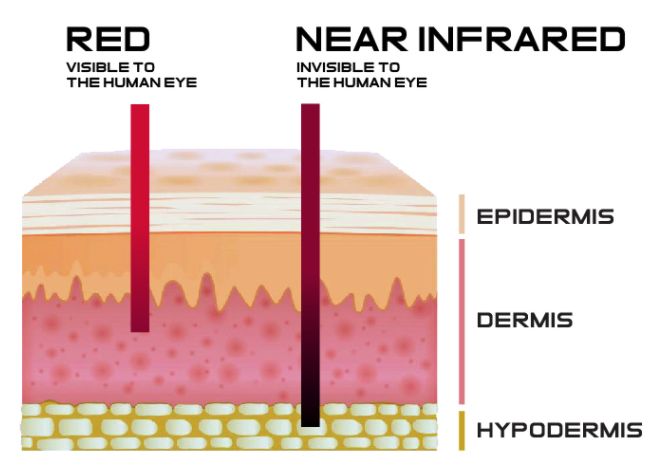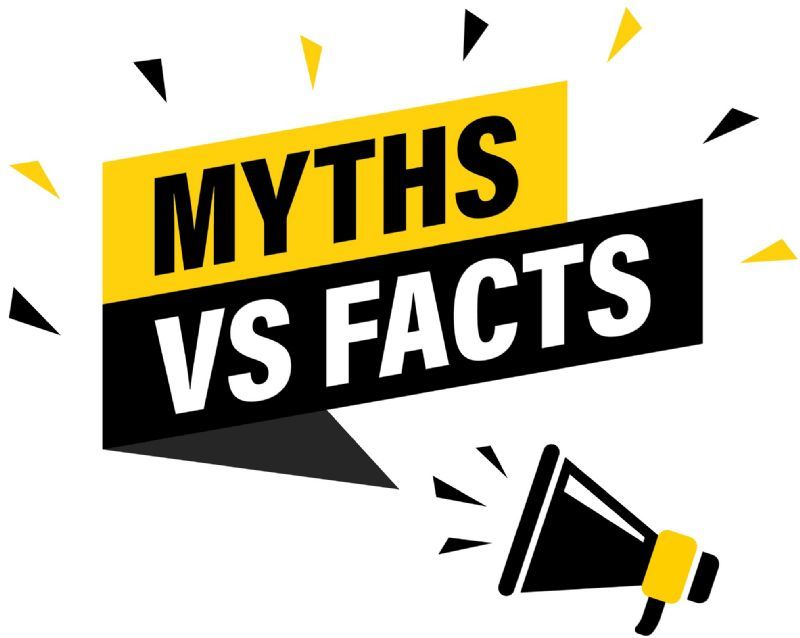 Written by Amanda Lundberg, BSN, RN
Written by Amanda Lundberg, BSN, RN
You may have heard of light therapy, but with all the different types of light (red, blue, infrared, etc), selecting the best light therapy device can be confusing to most. Red light therapy - also referred to as RLT, low level laser light therapy, cold laser therapy, or phototherapy - sends visible red and near-infrared light energy to your body’s cells. This infusion of energy stimulates cell repair and tissue growth. There is no doubt that RLT is quickly becoming one of the most popular treatments available.
You may already know that RLT is touted as a treatment that repairs multiple skin conditions, including: wounds, sun damage, scars, psoriasis, rosacea, and eczema. However, other potential medical uses currently being researched include reducing the side effects of chemotherapy, relief of pain and inflammation from tendonitis, arthritis, carpal tunnel syndrome, and preventing the recurrence of cold sores, to name just a few.
There are many skin care clinics, healthcare providers, and therapists that provide RLT services. However, if taking advantage of the cell repair and rejuvenation of this therapy is appealing, a red light therapy device designed for home use is a good option for convenience. With several models available, there are considerable variables to discuss and consider when choosing a home RLT unit.
Table of Contents |
When looking for a RLT unit, there are three different types. A red light, a near-infrared light, and a combination of both. Red light therapy and near-infrared light therapy are sometimes incorrectly referred to as the same thing. There are similarities, but they are not the same. You can’t physically see infrared light. Rather, your body feels it as heat on the skin. The longer wavelengths of near-infrared light infiltrate deep into your cells. Comparatively, you can visualize the shorter wavelengths of red light. It does not penetrate as deeply into the skin, and therefore is used to mainly treat the surface of the skin.
When considering red and near-infrared light, one is not necessarily better than the other. Both types of therapy are beneficial to the skin; they just offer different benefits. Red light is ideal for treating skin issues such as sunburns, acne, hair loss, wound healing, and even yeast infections. Near-infrared light penetrates about three times deeper into tissues than red light. While providing similar benefits for the skin as red light therapy, near-infrared extends to joints, muscles, and bones that require remedial benefits.
If you would benefit from treatment of the skin surface as well as deeper tissues, but only want to purchase one device, a combo unit is a great choice to meet a broader range of needs.
 | Red Light Therapy Belt with Rechargeable Battery - Hooga Wrap View Product |

You may recall learning in science class that light is measured in nanometers (nm) by its wavelength. Red light ranges from 600 to 700 nm and is visible and bright. Infrared or near-infrared light is in the 700 to 900 nm range, which isn’t visible to the naked eye.
Research suggests that light wavelengths ranging from 660-670 nm and 830-850 nm are in the range that has the most impact on the cellular respiration process while providing the highest level of light absorption. Finding a unit that can provide these ranges of optimal wavelengths will provide the greatest value to your skin health.

Light irradiance is the power density - the amount of light energy that reaches your skin. It’s measured in milliwatts per square centimeter (mW/cm2), referring to the number of photons flowing through an area and available for cells to absorb.
Light intensity refers to the amount of light energy at the source. This is an important factor to consider, as a low-powered device won’t be the source of enough red light energy to create the irradiance necessary for maximum benefit. When the light is more intense, it can be absorbed in less time, providing a more efficient therapy.

Larger light emitting diodes (LED) light therapy devices with more LED lights increase effectiveness and reduce treatment time. Having more LED bulbs delivers an increase in red and/or near-infrared light than a device with a smaller number of LED bulbs. In short, the more LED light bulbs, the better the unit will be.
.jpg)
Available products for home RLT units range from handheld to full-body pods. Smaller red light therapy devices, like the Medlight 630 Pro Red Light Therapy Device, are an ideal option if you have a single issue to address in one section of your skin. Smaller devices, like handheld wands or face masks, are highly portable and lightweight.
Larger, full-body red light therapy devices, like the Hooga HG1500 Red Light Therapy Panel, are more effective for vast problem areas, such as the torso or extremities. They are typically heavy and stationary.

There are many benefits to red light therapy, and it’s understandable if you want to share what works for you! Because RLT can address a multitude of issues, people in the same family with different needs can benefit from having this kind of treatment available at home.
If one family member has age spots they want to lighten, and another family member has back pain, it’s more efficient to have a larger device that can treat both conditions.

We love the Medical-Grade Red Light Therapy Device because of its versatility. This unit is unique in that it is considered a combo device, emitting red and near-infrared light. The Medical-Grade Red Light Therapy Device has four different wavelengths to choose from to target surface skin issues and deeper tissues.
It also offers photobiomodulation, which is a low-level laser therapy. You are able to customize the device to your specific needs based on specific wavelengths that can be pulsing or continuous.
There are two panels of the Medical-Grade Red Light Therapy Device to choose from. The main difference between these models are their size and number of LED light bulbs. The “R1” is considered medium-sized at 12.5 inches tall and has 60 LEDs. The “R3” is larger at 38 inches tall and has 180 LEDs. Both models offer the same therapy and control panels. Smaller treatment areas including hands, knees, feet, and neck are well served by the R1, while more vast areas such as the back, legs, and arms are easily treated with the R3.
These RLT panels can be used up to twice a day for 20 to 30 minutes per session, and the health benefits can be achieved after only 2 to 3 weeks of regular use.
 | Medical-Grade Red and Infrared Light Therapy Panel by Red Reactive View Product |
Bulb wattage measures the power the red light device consumes, not the device’s output. Simply put, wattage lets you know how much electricity your device requires to operate. If you are told wattage relates to the intensity of the light - then that is a red flag (pun intended)!The specification to look for is irradiance. Irradiance is the measurement of intensity of power being emitted by the device.
As with any treatment, RLT can interact with certain medications and may have side effects. If you are prescribed medicine that makes you sensitive to light, have migraines or seizures triggered by bright light, pregnant/breastfeeding, or diagnosed with bipolar disorder or other conditions that are potentially influenced by light exposure, a red light therapy device might not be a good option for you right now. If you have concerns regarding if this treatment is right for you, please consult with your healthcare provider.
As you know, you can’t believe everything you read on the internet. A blogger posting a piece in support of a product doesn’t mean it’s the best product. Many bloggers may not have expertise in the area of RLT. Typically, there are incentives for their endorsement, so be weary that it may not be an unbiased expert opinion. In this age of influencer marketing, be careful who you trust online.
No, RLT is not the same as a tanning bed. Traditional tanning beds use fluorescent light bulbs that emit UV rays which damage the skin. In contrast, red light therapy doesn't harm or burn your skin. Red light therapy devices use very low levels of heat and your skin is not exposed to any damaging UV rays.

Red light therapy is most effective when it is used consistently. Purchasing a red light therapy device for home use allows you to have a treatment when and where it works best for you. If you have other family members who can benefit from red light therapy, it makes the unit even more cost-effective. Alternatively, taking multiple trips to a clinic for RLT can add up financially. Compliance for a treatment plan decreases when convenience is lacking. Save time and money by investing in a home RLT to see results faster.
.jpg)
First, start with clean skin and use eye protection. Place the device about 6 to 8 inches from the intended area of treatment. Initially, start by using it 10 to 20 minutes at a time, 3 to 5 times per week. When you obtain the results you desire, ongoing treatments 2 to 3 times per week will help you maintain them. These are general guidelines; please read the instruction manual of your product for detailed information.
Red light is visible light falling on the light spectrum between 630-700 nm. This light therapy is used to treat conditions on the skin’s surface. Near-infrared wavelengths are not visible, landing between 700 and 1200 nm on the light spectrum. Near-infrared light penetrates deeper than red light into the body’s tissues.
Starting with 10 to 20 minute treatments 3 to 5 times per week, you can increase up to 20 to 30 minutes 1 to 2 times per day. Once you achieve the results you’re seeking, you can maintain them with ongoing treatments 2 to 3 times per week.
Choosing a device that is designed to give you the results you are seeking is the most important factor. Ensuring the device’s specifications match your needs for wavelengths, light intensity, irradiance, LEDs, following the user instructions, and being consistent with your treatment will ensure you get the best results.
It is not a requirement, but since the lights are very bright and may be uncomfortable for some individuals with sensitivities to light, eye protection is suggested. This recommendation is especially important if the treatment location is near the eyes.
Since red light therapy uses the most energy-efficient lighting technology, it is the least expensive kind of light to power. There will not be a significant impact on your power bill when you use a red light device for home use.
There are many ways red light therapy can be a benefit for your health. From skin cell rejuvenation to deep penetrating tissue healing, having a device for home use can serve a range of needs. As mentioned above, compliance with any light therapy treatment is essential. Having a device right in the comfort of the home provides the user with the utmost convenience. Apart from skin and tissue healing, many users also report an increase in mood as a result of using RLT.
The versatility and quality of the Medical-Grade Red Light Therapy Device is our favorite option for an at-home RLT unit. It allows you to choose red or near-infrared light in specific wavelengths, quantities, and continuous or pulsing waves. Available in two sizes, this unit can be customized to fit the specific needs of you and your family. You can review similar Light Therapy products for sale and compare options among different models.
Interested in learning more about light therapy? Check out all of our Light Therapy articles for everything you need to know! While you are reading, check out our full blog, Caregiver University for articles about seniors aging in place, wheelchairs, hyperbarics, pain management, special needs, and more!
Didn't find what you were looking for? Browse all Light Therapy products or our entire catalog of Therapeutic Modalities products.
Interested in learning more? Check out our free, educational resource Caregiver University. You will find incredible articles about light therapy, hyperbaric oxygen therapy, cryotherapy, and much more!
Want to get social? Find dozens of videos featuring products and tips like these on Rehabmart’s YouTube channel! And follow the RehabMart.com Facebook!

Amanda is a registered nurse with over a decade of experience in hospital, clinic, and healthcare management settings. Her primary focus has been collaborating with patients to manage disease processes. Aiming at continuing active lifestyles for her patients, Amanda has become an expert in adjunct therapies.
Amanda incorporates a holistic approach to heal the body from within. She has completed extensive research in remedial treatments using oxygen, as well as becoming a professional light therapy specialist. Her reparative ethos to health has sparked engaging conversations and teaching opportunities nationwide.
Amanda has taken her passion for articulating technical medical language and transitioned to freelance writing. She enjoys bringing a clinical voice to health and wellness brands.